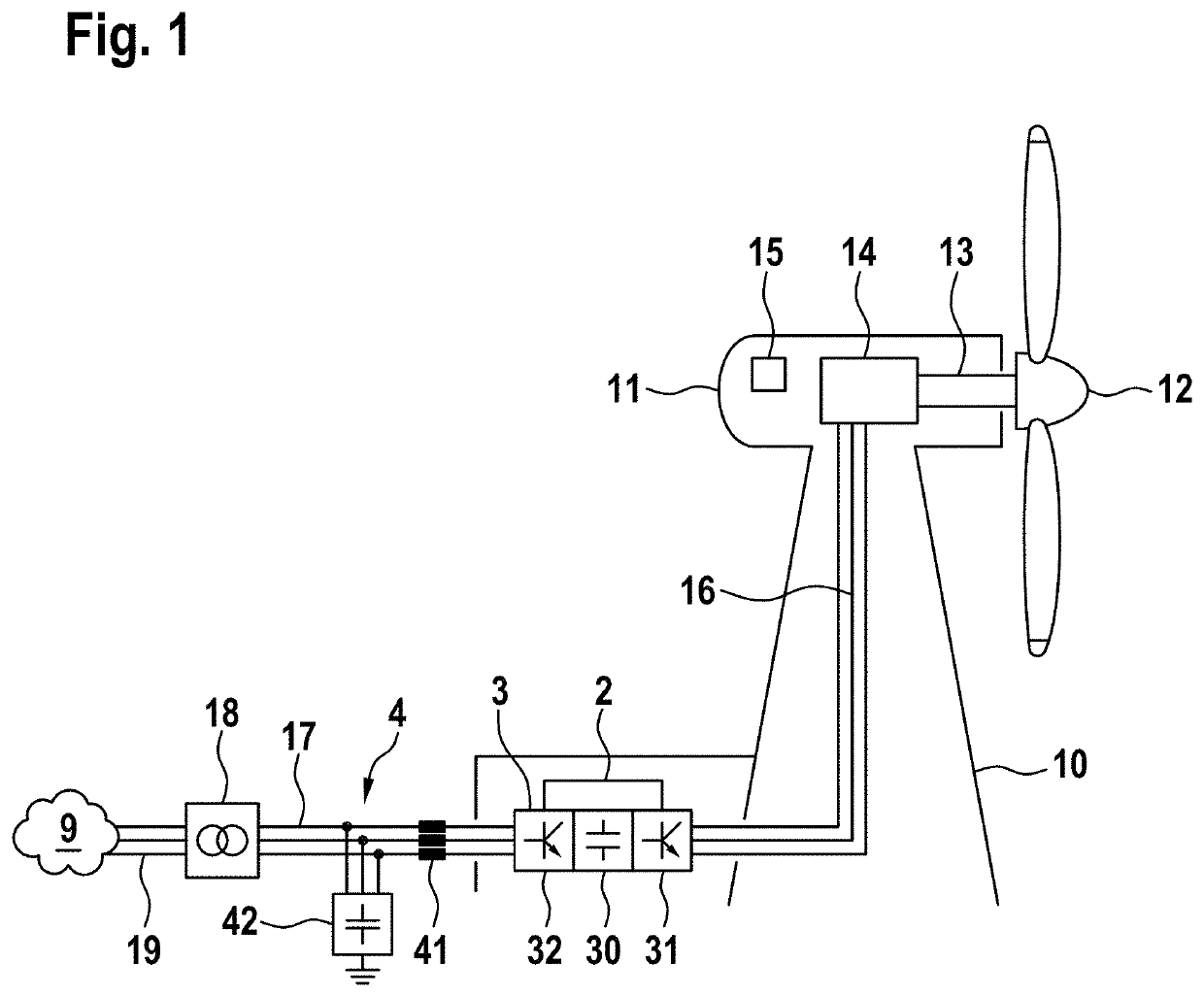Wind turbine having low-harmonic converter system, and method for operation
a converter system and wind turbine technology, applied in the direction of machines/engines, dc-ac conversion without reversal, harmonic/ripple reduction through ac network, etc., can solve the problems of harmonic disturbance grid, high cost, complicated configuration, etc., and achieve the effect of reducing harmonics more selectively
- Summary
- Abstract
- Description
- Claims
- Application Information
AI Technical Summary
Benefits of technology
Problems solved by technology
Method used
Image
Examples
Embodiment Construction
[0035]For the purpose of explaining an exemplary embodiment of the invention, reference is first made to FIG. 1. It shows a wind turbine according to an exemplary embodiment of the invention, denoted in its entirely by the reference 1, that is suitable for executing the method according to the invention.
[0036]The wind turbine 1 comprises a tower 10, arranged at the upper end of which, so as to be slewable in the azimuthal direction, is a nacelle 11. Rotatably arranged on an end face of the nacelle 11 is a wind rotor 12. It comprises a hub having one or more rotor blades and, via a rotor shaft 13, drives a generator 14 arranged in the nacelle 11. This generator converts the mechanical power, generated from the wind by the wind rotor 12, into electrical power. The generator 14 may be a synchronous or asynchronous generator, but other generator designs may also be provided. Also arranged in the nacelle 11 is an operation controller 15 that controls the overall operation of the wind tur...
PUM
 Login to View More
Login to View More Abstract
Description
Claims
Application Information
 Login to View More
Login to View More - R&D
- Intellectual Property
- Life Sciences
- Materials
- Tech Scout
- Unparalleled Data Quality
- Higher Quality Content
- 60% Fewer Hallucinations
Browse by: Latest US Patents, China's latest patents, Technical Efficacy Thesaurus, Application Domain, Technology Topic, Popular Technical Reports.
© 2025 PatSnap. All rights reserved.Legal|Privacy policy|Modern Slavery Act Transparency Statement|Sitemap|About US| Contact US: help@patsnap.com



